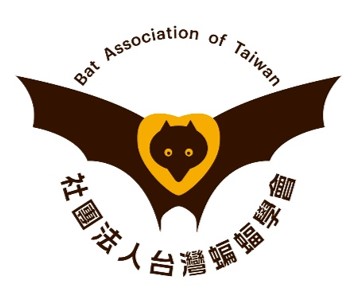蝙蝠研究
2010_台灣管鼻蝠的族群遺傳結構與基因交流_林清隆
出版年份:2010
研究生:林清隆
分類:碩士論文
題目:台灣管鼻蝠的族群遺傳結構與基因交流
Title:Population genetic structure and gene flow in the Formosan tube-nosed bat ( Murina puta )
摘要:
族群遺傳結構通常受到歷史地質事件與本身的生物特性所影響,而前者主要形成長時間尺度下既有的族群遺傳結構,後者則為現今基因交流影響既有族群遺傳結構的重要因子。藉由兩種不同尺度的探討,可以了解族群遺傳變異的演化歷程,以及性別差異的播遷型式。本研究選定廣泛分佈於全島各海拔山區森林的台灣管鼻蝠,探討其族群遺傳結構、基因交流特性及族群變動的型式,並以金芒管鼻蝠作為對照。此外,進一步檢測台灣管鼻蝠族群於不同海拔間的基因交流及是否有性別差異的播遷型式。本研究利用兩種分子標記物:粒線體DNA控制區域與六組微隨體DNA基因座進行分析。結果從來自24個樣點的109隻台灣管鼻蝠樣本和12樣點的37隻金芒管鼻蝠樣本的資料顯示,台灣管鼻蝠族群遺傳距離與其地理距離呈顯著正相關,而金芒管鼻蝠則無明顯相關。AMOVA的結果顯示,台灣管鼻蝠於3個地理區間及各區域內的族群間皆呈現顯著的遺傳結構,金芒管鼻蝠於區域間與區域內族群則皆呈現無明顯族群遺傳結構。因此,台灣管鼻蝠族群間的交流較為封閉,並受地理距離限制。進一步分析來自22個樣點的120隻台灣管鼻蝠,在不同地理區間與海拔帶間的基因交流,並配合母系遺傳的粒線體DNA分子標記進行比較。結果發現,台灣管鼻蝠族群在粒線體DNA中有明顯地理結構,但微隨體DNA則呈現低度遺傳變異,推測雄性個體播遷能力高於雌性,且雌性個體不具戀出生地性的行為。此外,不同海拔帶間族群的檢測結果顯示雌性個體有偏好垂直方向播遷的基因交流趨勢,雄性個體的基因交流無特殊偏好與限制。
Abstract:
The population genetics structure are generally influenced by both historical and contemporary processes. Comparing the two different time scale factors, may understand the evolution processes and sexual-biased dispersal. The Formosan tube-nosed bat (Murina puta) is endemic to Taiwan, where it is widespread at each altitude. Based on study of M. puta and compared with Harpiola isodon. We can understand the characters of gene flow, demography, and the reason for siginificant population structure. Futhermore, we investigate the gene flow of popoulations of M. puta among different altitudes. In this study, we used two molecular markers to do analysis, which are mitochondrial DNA control-region and six microsatellite loci.
We examined variation in the mitochondrial DNA control-region in 109 samples at 24 sites of M. puta and in 37 samples at 12 sites of H. isodon. Both species have high haplotype diversity but low nucleotide diversity. Population differentiation followed a pattern of isolation by distance in M. puta, but not in H. isodon. It suggested that geographic distance is a limit to gene flow of M. puta populations. Base on mismatch distribution analysis, the populations of both species are rapid expanding recently. The results of AMOVA of M. puta revealed that between and within each regional populations have significant genetics structure. However, the populations of H. isodon in each AMOVA hierarchical levels are no significant genetics structure. It suggested that the gene flow of populations of M. puta is limited. Futhermore, we examined variation in the six microsatellite loci in 120 samples at 22 sites of M. puta. The results of AMOVA of M. puta revealed that populations among regions and among different altitudes do not have any significant genetics structure. And compared with mitochondrial DNA, microsatellite DNA revealed lower genetic diversity. It suggested that the dispersal ability of male is better than female. However, the analysis in this study revealed female is not philopatry. Our results of populations of M. puta suggest that male has no restrict to gene flow, but female has a preference for vertical gene flow.
